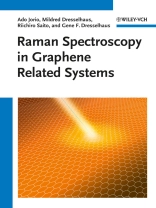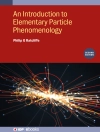Raman spectroscopy is the inelastic scattering of light by matter. Being highly sensitive to the physical and chemical properties of materials, as well as to environmental effects that change these properties, Raman spectroscopy is now evolving into one of the most important tools for nanoscience and nanotechnology. In contrast to usual microscopyrelated techniques, the advantages of using light for nanoscience relate to both experimental and fundamental aspects.
Inhaltsverzeichnis
Part I Materials Science and Raman Spectroscopy Background
The sp? Nanocarbons: Prototypes for Nanoscience and Nanotechnology
Electrons in sp? Nanocarbons
Vibrations in sp? Nanocarbons
Raman Spectroscopy: From Graphite to sp? Nanocarbons
Quantum Description of Raman Scattering
Symmetry Aspects and Selection Rules: Group Theory
Part II Detailed Analysis of Raman Spectroscopy in Graphene Releated Systems
The G-band and time-Independent Perturbations
The G-band and the Time-Dependent Perturbations
Resonance Raman Scattering: Experimental Observations of the Radial Breathing Mode
Theory of Excitons in Carbon Nanotubes
Tight-Binding Method for Calculating Raman Spectra
Dispersive G‘-band and Higher-Order Processes:the Double Resonance Process
Disorder Effects in the Raman Spectra of sp? Carbons
Summary of Raman on sp? Nanocarbons
Über den Autor
Ado Jorio is a Professor in the Physics Dept. of the Federal University of Minas Gerais, Brazil, where he also earned his Ph D, in 1999. His Post-doctoral research was done at MIT, USA, where his collaboration with the Dresselhaus group and with Professor Saito started. He has authored and co-authored several book chapters and books on carbon science and has been active in science policy in Latin America.
Mildred Dresselhaus received her Ph.D. at the University of Chicago in 1958 and started research on carbon science in 1960 with Gene Dresselhaus while working at the MIT Lincoln Laboratory. She has been an MIT professor since 1967, and started working with Riichiro Saito in 1991 and with Ado Jorio since 2000.
Riichiro Saito received Ph D degree from the University of Tokyo in 1985. After being a Research Associate at the University of Tokyo in 1985 and an Associate Professor at the University of Electro-Communication in Tokyo in 1990, he became Professor at Tohoku University in Sendai since 2003.
Gene F. Dresselhaus received his Ph D degree from the University on California, Berkeley under the supervision of Charles Kittel. He has actively worked on a variety of problems
in condensed matter physics. He has taught courses in condensed matter physics at the
University of Chicago and at Cornell University. He currently holds a Research appointment at MIT and jointly leads a research group at the MIT Center for Materials Science and Engineering which studies graphite intercalation compounds, fullerenes, graphene, and carbon nanotubes. He has Co-authored or Co-edited six books on Carbon Science.












